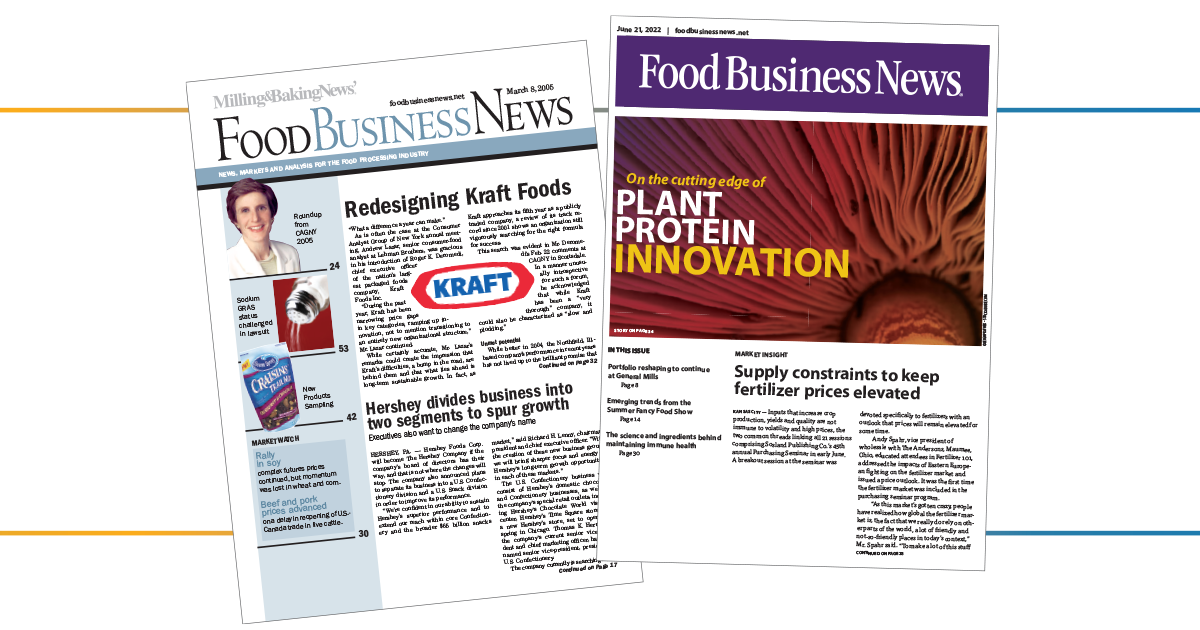By Andy Nelson
June 2022
Health
matters
Retailers try to keep up with ever-changing definitions of health and wellness


Health and wellness has never been more important for Americans and for the suppliers of the foods they eat to help them meet their personal better-for-you goals.
But health and wellness have evolved so much in recent years, it’s hard to pinpoint exactly what people mean when they use the terms. Getting a better handle on it, though, is critical to perimeter departments that want to capitalize on the obvious advantages their fresh and healthy foods provide.
In the food world of 20 or so years ago, there wasn’t nearly as much crossover between healthy eaters and those who fell into different categories, said Krystal Register, director of health and wellbeing for Arlington, Va.-based FMI – The Food Industry Association.
For instance, people who called themselves healthy eaters didn’t tend to overlap with those who identified as foodies.
But what Register calls a “convergence” began to emerge before the pandemic and only accelerated during it. Today’s consumers increasingly don’t just want to be just foodies and health-conscious, they also want convenience and a host of other benefits when they make their food-buying choices.
When it comes to the fresh perimeter, one way retailers are trying to meet that new consumer where she is, Register said, is with easy meal solutions that combine convenience, health and flavor.
Crucial to those efforts for many retailers is the input of in-house dietitians.
“There’s an uptick in the number of dietitians in stores,” Register said. “They have the education and the knowledge to take the science of nutrition, which isn’t always easy to talk about, and put it into a customized solution.”
Making that solution convenient is crucial. According to recent Industry Speaks data from FMI, 80% of retailers plan to add more grab-and-go options in the near future.
The rise of “natural”
One big difference between the perimeter departments of the past and the perimeter departments of the present is the presence of “natural” products, said Raj Shroff, founder and principal of Columbus, Ohio-based PINE Strategy & Design.
“It used to be you had a market that specialized in natural, now every grocery store has a huge organic section,” he said. “Natural continues to go mainstream.”
“Mainstream” also increasingly means “decentralized,” said John Youger, a PINE partner. Kroger and other retail chains used to have natural sections in their store. Now natural products are spread throughout the perimeter and the rest of the store.
Despite all of the gains, selling consumers on health and wellness can be easier said than done. As Youger points out, it’s convenience, not health and wellness, that seems to be playing the biggest role in the grocery perimeter of today. Sometimes that can overlap with healthy, but not always.
One simple thing retailers could do in the perimeter to promote the health benefits of their products is more instore signs, Shroff said. Simple messages like “This product is high in fiber,” or “This product has been tied to heart health.”
“It’s not trying to cram it down their throat,” Shroff said. “They can read it or they can ignore it. There may a little of this being done at a store like Whole Foods, but retailers in general have really fallen short in the perimeter of adding that value to shoppers.”
Youger said PINE did a “shop along” with people with diabetes. Once they got outside of the section of the store devoted to people with diabetes, they were lost, he said, unsure of what they could and couldn’t eat.
“It’s a lack of execution by stores,” he said.
One way perimeter departments could combine health and convenience, Shroff said, would be to create “tiered” meal kits combining protein, produce and other perimeter items. One tier could be low sugar, another energy, another recovery, for example.

Pandemic impact
“Health and wellness” is a fluid category, and during the pandemic, many consumers dropped more “restrictive” diets — keto, for example — but were more likely to stick with Mediterranean, whole-food and other diets, Register said.
And regardless of this or that trend du jour, what always “rises to the top,” she said, is heart health.
Whatever particular form their approach to diet takes, almost half of all Americans — 48% — follow at least some approach, indicating that health and wellness is definitely on the minds of consumers, whether they put their intentions into action or not.
And retailers are getting the message.
“There is a real increase in investment in health,” Register said. “And there’s a lot of research showing a direct connection between increasing health outcomes and return on investments.”
Variety, technology, demographics
The grocery fresh perimeter is so diverse, there are many lenses for studying the evolution of health and wellness over the decades.
Take fresh produce. For decades, produce departments focused on a basic range of items, said Brian Numainville, principal in Lake Success, N.Y.-based Retail Feedback Group. Then things like organics started to gain in popularity, and from there, one of the big differences today from a variety perspective, Numainville said, is the expanded range of exotic and superfood items from around the world that many shoppers look for to help meet their health and wellness goals.
Another game-changer, he added, was the advent of smartphones. Apps now provide all the information you’d ever want about specific products and their health benefits, right at your fingertips. And if a shopper needs to find product information — to determine, for example, if a product is gluten-free or to learn more about ingredients or nutrition facts for a specific product — it’s as simple as a web search or app while in the store.
As food is increasingly looked at as a kind of “medicine,” Numainville said, the grocery store has a real opportunity to be the hub of health and wellness for shoppers.
“It all starts with understanding where the shoppers of a given location are at in terms of their health and wellness needs,” he said. “A rural store with an older population might have a very different approach than an urban store with a high percentage of younger shoppers or a suburban store with many families with young children.”
From there, it’s important find ways to link messaging up through the store so there’s consistency and synergy between the various departments in the store, the pharmacy and dietitians. That means connecting the dots for shoppers, so those who are looking for healthy foods and options can easily identify them throughout the departments in the store, providing a convenient and simple communications in all vehicles available — signage, digital, social and beyond.
An interesting point of reference, Numainville said, is the 2021 Food & Health Survey from the International Food Information Council, which found that “In 2016, consumers most identified with the negative: the absence of certain components, like fat and sugar content. In 2021, the definition takes a more positive tone: 27% say it is defined by the presence of healthful components (like fruits, veggies, and nutrients) (up from 17%) and 25% say it is the food that is simply “good for you” (up from 18%).”
“That clearly indicates that shoppers are shifting how they look at food, moving away from an absence of items like fat and sugar, towards choices that moves towards the inclusion of healthy fresh foods that can be used for health,” he said. “I also think shoppers are looking at functional foods, moving beyond simply taking vitamin supplements but connecting with foods that offer health benefits.”
Products grown and sourced from farmers engaging in regenerative agriculture practices will continue to pick up steam into the future, combining “good for you food” with “good for the environment” practices, which appeals to many shoppers, and likely will resonate heavily with millennials and Gen Z, Numainville said.
The growing interest in health and nutrition meant supermarkets had many more SKUs to offer shoppers, but this fragmentation also presented new challenges such as building the right assortment at the store level, managing inventory and the need for smaller case counts, and even new competitors who were finding more efficient ways to connect people with the specific products they wanted to meet their respective needs, according to Barrington, Ill.-based consultancy Brick Meets Click.
Merchandising and services such as meal planning and consults with dietitians are among the creative ways supermarkets can meet their customers’ health and wellness needs, according to Brick Meets Click.
Eating healthier is hard work, though, a challenge dietitians know well. Even when they work one-on-one with their clients, making a lasting change in the way people eat remains elusive. It’s difficult to change eating habits even when these lifestyle changes can lead to a better quality of life.
Information is not the problem, according to Brick Meets Click. Nutritional information has never been more accessible, and there’s plenty of guidance available on what to eat and what to avoid based on a person’s health issues.
“The problem is the friction that comes from the work of combining all the nutrient information and health facts into decisions about what specific products to buy.”
You might also enjoy:
Business intelligence and market analysis address the needs of readers throughout the food processing industry.
Sosland Publishing’s new publication offers insight into a dynamic industry.




